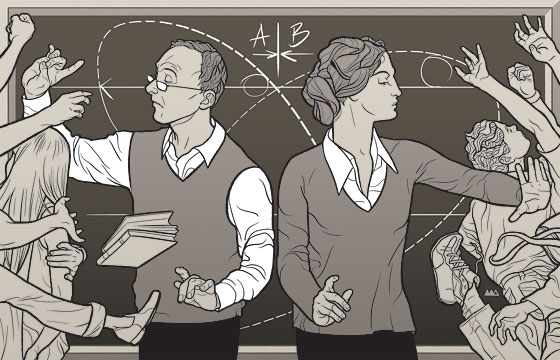
When Michael Bloomberg ran for mayor in 2001, he cited research that claimed crowded classrooms are “one of the greatest detriments to learning” and vowed to reduce city-school class sizes. Now, in year ten of his reign, principals are overseeing what they say will be, when the final numbers are tallied, the most crowded classrooms in a decade. Class averages may creep north of 27 pupils in upper grades—a source of anxiety for parents and fuel for teachers’-union outrage.
But on the first day of school last week, the mayor evinced no worry about overcrowding, even highlighting the school system’s growing population as evidence of its popularity. He’s even now taken the position that class size does not, in fact, change student performance. Has research on the subject undergone a revolution? Not really. It’s always been mixed enough to be cherry-picked to support any argument. What haschanged is the tenor of education rhetoric, which is so polarized that it’s sucked even the avowedly nonideological Bloomberg into a fight in which neither side will admit to being anything less than 100 percent correct at all times.
Today, no schools-related decision is just a decision. It is either a brave stand against special interests on behalf of children or a special-interest conspiracy against children. If you’re on one side, you see ideologues trying to bust the teachers’ union and corporations trying to privatize education for profit. If you’re on the other side, you see a desperate labor movement out to perpetuate its influence. And so marginal movements in class size become matters of principle. Because what is the only way to reduce class sizes? To hire union-dues-paying teachers! Thus the administration has taken to treating union complaints as smoke screens for power grabs; meanwhile, the union sued the city for misusing funds meant for class-size reduction. (The suit was later dismissed.)
For what it’s worth, today—as ever—researchers maintain a fairly boring take on the class-size question: Yes, the more children there are throwing things at teachers, the more complicated teaching becomes. Sometimes, this will result in dips in test scores. But cutting class sizes doesn’t always produce better outcomes—especially not when hastily imposed size caps compel the hiring of inexperienced teachers. And there are many other factors, including teacher quality, that affect results.
One way for a policymaker to respond to this reality is by saying, “Okay, then! I will try to create a system that recruits, trains, and retains better teachers. One that includes rigorous data- and observation-based evaluation of performance as well as increases in compensation, improvements to teachers’ colleges, funding of support programs for existing teachers, and overdue repairs to often-literally-crumbling school buildings themselves.” Unfortunately, that is a made-up quote. Typically, education reform just bogs down into administrators’ demanding to be more easily able to fire bad teachers and unions’ defending the status quo.
As it happens, there are people in the city Department of Education working on open-minded, teacher-friendly methods of improving training and evaluation. And, obviously, not all rank-and-file teachers are opposed to structural changes. The problem is that the people who are in charge still believe that school reform is war. And nothing much about New York City education is going to change while that remains the case.
Have good intel? Send tips to [email protected].